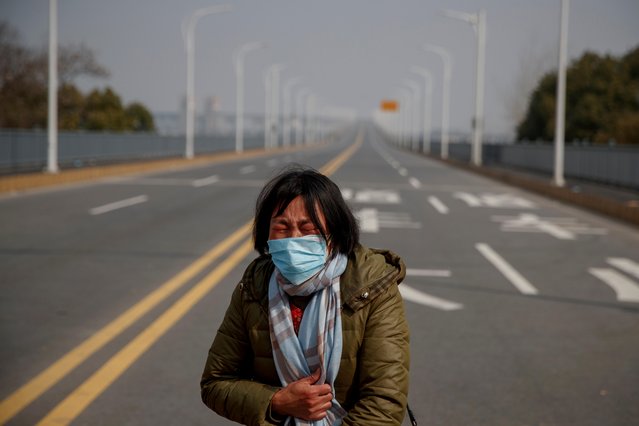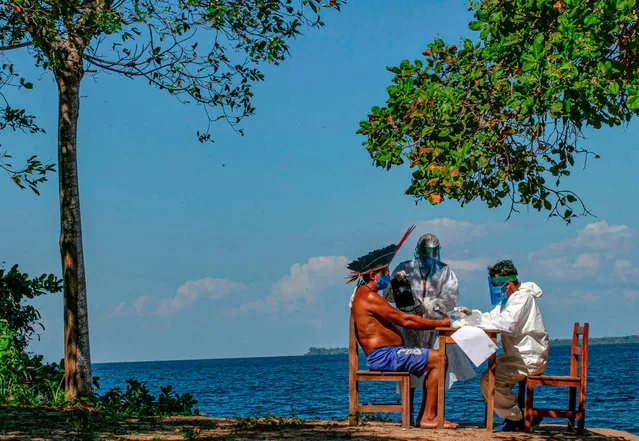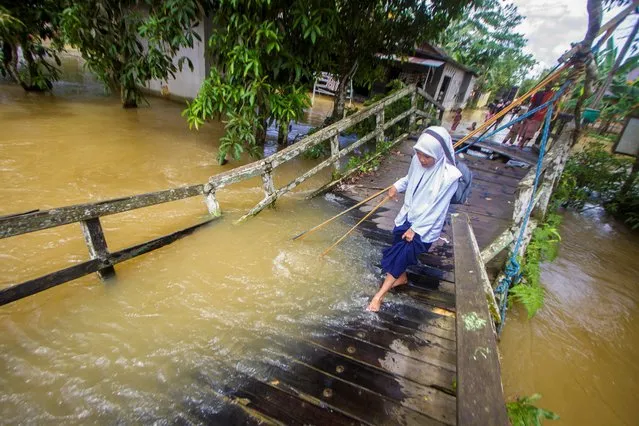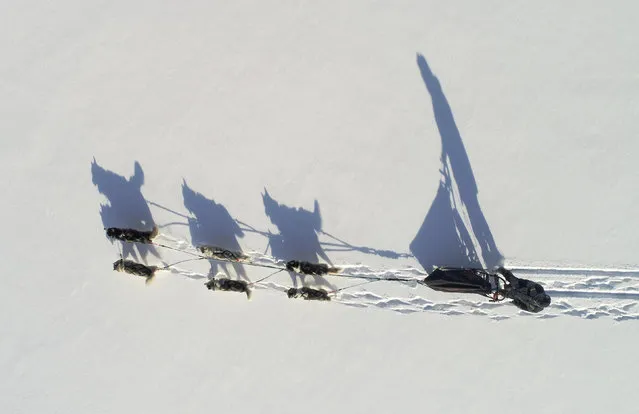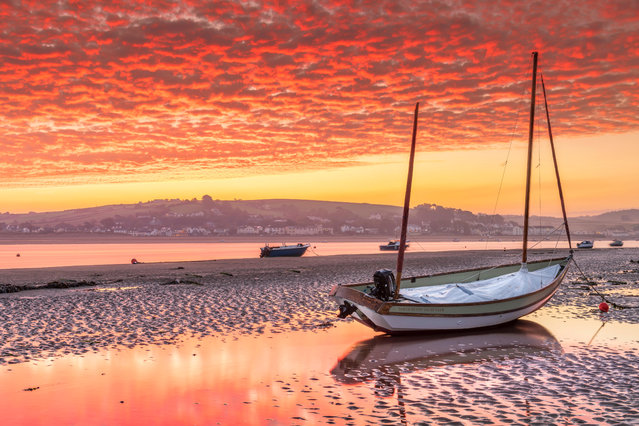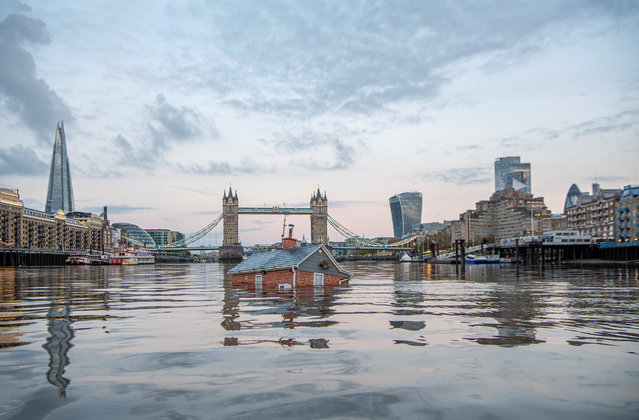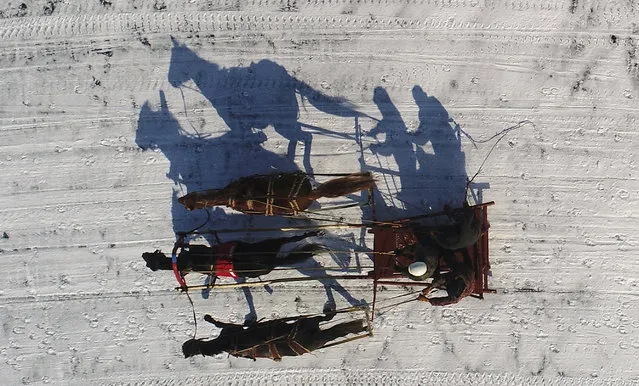
An aerial view shows a Russian Troika, a sledge drawn by three horses, competing on the ice-covered Yenisei River during the annual Ice Derby amateur horse race near the Siberian settlement of Novosyolovo, south of Krasnoyarsk, Russia March 17, 2018. (Photo by Ilya Naymushin/Reuters)
21 Mar 2018 00:01:00,post received
0 comments

